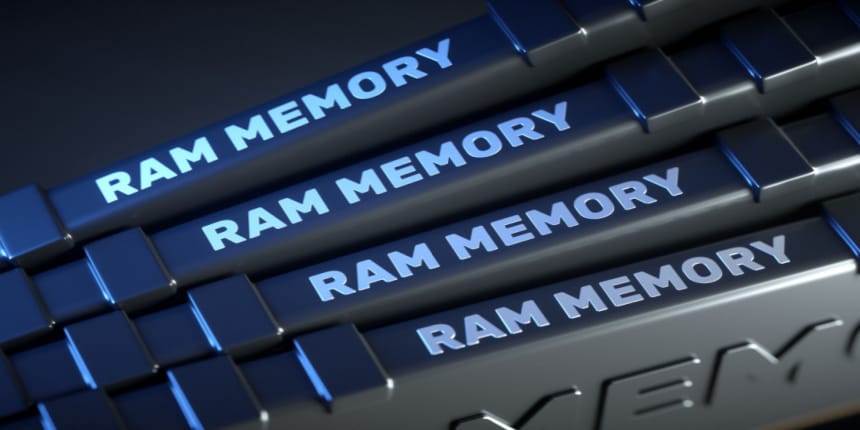SRAM and DRAM Full Form
What is the full form of SRAM & DRAM?
The two well-known RAM types, SRAM and DRAM, are utilised extensively in all computing hardware. Static Random-Access Memory and Dynamic Random-Access Memory are both referred to by their full names, respectively. While the power supply is on, SRAM is utilised to store data, whereas DRAM saves the data in cells comprised of a capacitor and a transistor.
- What is the full form of SRAM & DRAM?
- Overview and Meaning of SRAM & DRAM
- Meaning of RAM
- Meaning of SRAM
- Meaning of DRAM
- Specifications of Static RAM
- Specifications of Dynamic RAM
- The Benefits of Static RAM
- The Benefits of Dynamic RAM
- Negative Aspects of Static RAM
- Negative Aspects of Dynamic RAM
- Conclusion

Overview and Meaning of SRAM & DRAM
SRAM (or Static RAM) and DRAM are two different forms of RAM, or random-access memory (or Dynamic RAM). Performance-wise, SRAM outperforms DRAM. The most popular RAM, however, is DRAM since it is affordable and has a large amount of storing capacity. A common kind of DRAM is DDR3.
Meaning of RAM
Random Access Memory is referred to as RAM. RAM is a sort of computer memory that enables direct access to any byte without requiring us to first read any prior bytes.
RAM is a sort of volatile memory, meaning that it requires continuous power to maintain the data it contains. The RAM's data is immediately erased if the power source is cut off. For this reason, computer RAM is often referred to as cache memory or temporary memory.
SRAM and DRAM are the two forms of RAM.
Meaning of SRAM
Static Random-Access Memory is known as SRAM. Transistors are used to store the data in an SRAM. In this RAM, Bistable Latching Circuitry is used to store each memory bit. The six transistor memory cells are used to store the data.
SRAM needs a steady power source since it stores data on transistors. SRAM doesn't need to be refreshed in order to recall the data it is storing because the power supply remains continuous. Because no action is necessary to recall the stored data, SRAM is often referred to as a static RAM.
SRAMs are utilised in cache memory because of their low power requirements and quick access times.
Meaning of DRAM
Dynamic Random-Access Memory is known as DRAM. The most common type of RAM in computers is DRAM. Capacitors store the data in a DRAM. Within a certain integrated circuit, each bit of data is kept in its capacitor. A capacitor is said to be charged if its value is 1, and discharged if its value is 0.
Due to capacitors' propensity to lose charge even while continuously powered, DRAMs have significant power consumption. The power supply in DRAMs must be updated often to maintain the data stored there because of charge leakage. These RAMs are considered dynamic for this reason.
Because they are affordable and have a large memory capacity, DRAMs are employed in primary memories.
Specifications of Static RAM
The features of static RAM are as follows:
Transistors are used by them to store data.
They use less energy than DRAMs do.
They rotate through quickly.
Typically, they serve as cache memory.
They outperform DRAMs in terms of speed.
They take up more room than DRAMs do.
The cost to produce them is high.
Specifications of Dynamic RAM
These are the attributes of dynamic RAM:
To store data, they employ capacitors.
Their production costs are low.
They are frequently employed as the primary memory.
In order to keep the saved data, they must refresh.
Compared to SRAMs, they are sluggish.
They use more energy than SRAMs do.
Their data lifespan is brief.
The Benefits of Static RAM
SRAM operates significantly more quickly than DRAM.
Compared to DRAM, SRAM consumes less power.
For making speed-sensitive caching, SRAM is employed.
The contents of the memory do not require refreshing in SRAM.
The Benefits of Dynamic RAM
DRAM is less expensive than SRAM.
DRAM provides a large amount of storage.
It is simple to design DRAMs.
There is a lot of memory in DRAM.
Negative Aspects of Static RAM
SRAM is a pricey product.
SRAM has a limited amount of storage space.
Low memory density characterises SRAM.
Negative Aspects of Dynamic RAM
DRAM moves more slowly than SRAM.
DRAM consumes a lot of electricity.
Conclusion
Random Access Memory is referred to as RAM.
RAM is a form of volatile memory, meaning that when the power is cut off, the data stored there is lost.
RAMs come in two varieties: static RAM and dynamic RAM.
Transistors are used in SRAM to store the data. The data is kept in capacitors in DRAM.
SRAMs outperform DRAMs in terms of speed and cost.
DRAMs provide more storage capacity than SRAMs.
Cache memory uses SRAMs, whereas main memory uses DRAMs.
Frequently Asked Questions (FAQs)
SRAM is frequently used for cache memory in computers, such as the L2 or L3 cache of a CPU. Due to its expense and size, it is not utilised as the primary memory of computers. Instead, most computers utilise DRAM since it offers higher densities and is less expensive per megabyte (MB).
SRAM is utilised primarily for the cache and internal registers of a CPU whereas DRAM is used for the main memory of a computer. SRAM is quicker and more costly than DRAM
In contrast to DRAM, which has a longer access time and is slower than SRAM, SRAM has a shorter access time and is quicker.
Due to the rising demand for memory capacity and bandwidth, main memory (DRAM) now uses up to half of the system power in a computer.
Yes. One CR2032 coin-type battery powers both the SRAM etap AXS and Eagle AXS shifters.